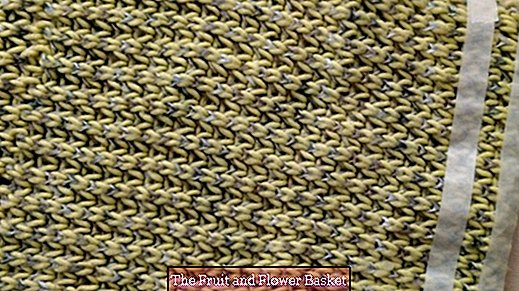Shorten the loop of knitwear
My lover, who loved his color because of its color, often had to stay in the closet for the winter because it was still too long for me, double looped around his neck, so that he was chic, but the wind often made it to my neck :-( I did not dare to cut it with the sewing machine until now, because I know from experience that such coarse knitwear moves slightly when sewing, = the knit is stretched along the seam in the width and in the length due to the difficult transport like to move it forward, so the length of the knit will be "extended." In short, the finished seam would probably be wider than the measured width of the loop and thus look bad.
Today I had the idea: Apply the crepe on the right and left of the desired new seam on the loop and then sew in between with a special stitch! Please read the detailed implementation below the pictures.
I wish all readers and users of TheFruitAndFlowerBasket a year 2018 with a lot of health, satisfaction and a great creative urge!
Step-by-Step Guide
Step 1:
To the right and to the left of the seam to be sewn, stick the crepe on the loop surface so that it does not change in width, or if at all, it tends to become a little narrower. D. H. that the fabric is a little bit "pushed together".
Step 2:
My sewing machine offers a great stitch for knitwear, which - like an overlock - sews in one operation on the left edge of the seam, then with a zigzag stitch (which you can widen) sergeant the fabric and then prevents fraying at the right edge. This overlock stitch is also great for terrycloth!
Step 3:
I sewed exactly between these crepe strips, but additionally pressed the fabric directly in front of the presser foot with the tip of my scissors towards the feed dog, so that it could slide better under the sewing foot.
Step 4:
When looking closely, you can see that the stitch pattern has become uneven. On the one hand, this is due to the thickness of the knitted fabric and, on the other hand, to the fact that it is very loosely processed, so that the loops move very easily against each other. In order to make the finished new seam even flatter, after cutting off the excess knit, I laid the wide, new seam flat like a seam allowance and then sewed it onto the loop again with a narrow zigzag stitch.





